Both the .45-70 and the .30-06 are popular choices in the hunting community, especially among the large game hunters. But they also have a bunch of differences that set their performances apart.
These hard-hitting rounds work exceptionally well in close ranges, but as the range increases, the otherwise superior .45-70 loses accuracy and trajectory.
Today we’re making a head-to-head comparison between .45-70 vs .30-06 cartridges to help you find the best cartridge for you.
Table of Contents
30-06 vs 45-70 Rounds: Head-to-Head Comparison
A Quick Look at the .45-70
The .45-70, AKA the “.45-70 gov/govt,” came out in the years following the American Civil War (1861-1865). These mighty cartridges were introduced by the U.S. Army’s Springfield Armory in 1873.

They became widely known as the “forty-five seventy” among the U.S. troops and hunters. Aside from being one of the primary ammo for the military, these hard-hitting bullets are capable of taking down any large game animal that roams around North America.
A Quick Look at the .30-06
The compact .30-06 rounds also have a history with the military. Also known as the .30-03 Springfield, these rounds were patterned after the famous 7x57mm Mauser cartridge that was used during the Spanish-American War.
The .30-06s are 30-caliber, rimless, and centerfire rifle cartridges that fire 0.308” diameter bullets. They were used in the semi-auto M1 Garand and a scoped variant of the 1903 Springfield for long-range shooting.
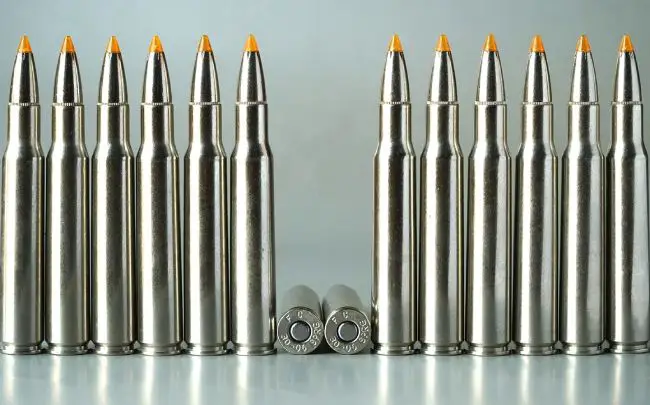
Known as the American Military Powerhouse, the .30-06 rounds became vastly popular among civilians and are still today, after 100+ years after its invention in 1906. They served in both world wars.
Key Differences Between the 45-70 and 30-06 Cartridges
Cartridge Size
.45-70
When it comes to cartridge size, the 45 70, compared to the 30 06 bullets, are a bit wider and feature a shorter case length.
The case length is one of the only two aspects where the numbers speak for the .30-06. The .45-70 also features a straight-walled design.
.30-06
In spite of being inferior to the .45-70 in almost all aspects, the 30-06 surprisingly packs a much heavier punch than the .45-70 in terms of SAAMI spec maximum pressure.
The shorter and narrower rounds literally dwarf the .45-70 with more than twice the pressure.
Property45-7030-06Parent CasingN/A.30-03Base Diameter0.505”0.471”Neck Diameter0.480”0.340”Bullet Diameter0.458”0.308”Case Capacity81.8 gr68 grCase Length2.105”2.494”Overall Length2.550”3.34”Max Pressure (SAAMI)28,000 psi60,200 psi
Ballistic coefficient
.45-70
To put it bluntly, the ballistic coefficient shows how aerodynamic a bullet is. The higher the number is, the better your bullet will perform against the wind.
The .45-70 is at a slight disadvantage here. The bullet is heavier. Despite performing really well in the close and mid-range, the performance of .45-70 bullets goes down a bit in the long-range.
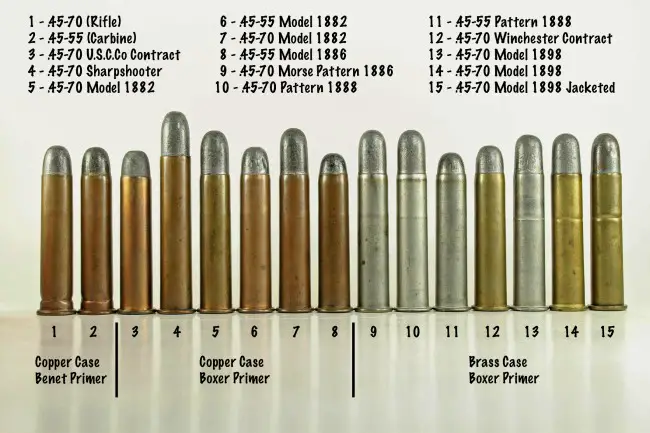
.30-06
The heavier bullets usually come with a higher BC count, but not in this case! The aerodynamic design helps the .30-06 dominate in BC count, even at long ranges.
Recoil
.45-70
The amount of recoil felt depends on the shooter, the ammunition, and the weapon used. Heavier rifles tend to soak up some of the recoil energy so that it puts smaller stress on your shoulder.
Being heavier and armed with more firepower, the .45-70 will impart significantly heavier recoil energy (around 33 ft lbs) into your shoulder.
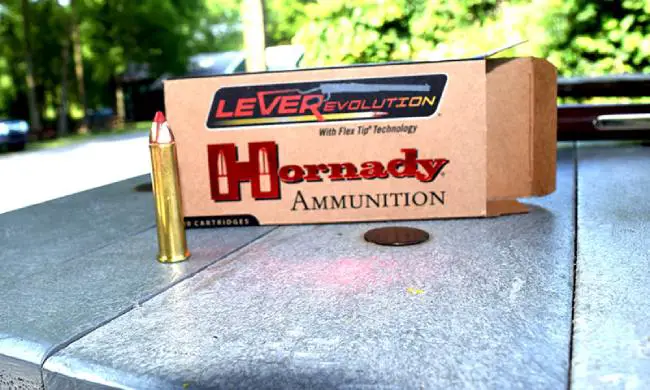
.30-06
Both the .30-06 and the .45-70 come with a high recoil profile. However, the recoil energy from the .30-06 is notably less (around 23 ft-lbs) than the .45-70.
In fact, they were specifically designed to have less recoil energy than the popular hunting cartridges of that time, like the 45-70.
Trajectory
.45-70
Usually, the heavier a bullet is, the higher muzzle velocity it produces. As a result, the bullet gradually loses momentum, and gravity takes more time to pull the bullet downwards.
The 45-70 cartridges are heavier than the .30-06, producing a more steep trajectory. That is why the performance also drops significantly downrange. You’ll not get good results if you are shooting from 300+ yards.
.30-06
The lighter .30-06 absolutely dominates this category with a much flatter trajectory than the .45-70. That’s why they are one of the most widely used cartridges in mid-to-long-range hunting across the globe.
Accuracy
.45-70
Accuracy is subjective, meaning it greatly depends on the person shooting and the firearm used. These hard-hitting rounds can deliver bone-crushing power at close range but lose accuracy significantly at longer ranges.
.30-06
With a flatter trajectory, the .30-06 dominates long-range hunting. These compact rounds can maintain their supersonic speed for a little over 1000 yards before the gravity and sit resistance starts to affect the accuracy.
If you are hunting within a range of 200-300 yards, you’ll notice no significant differences in the accuracy between the .45-70 and the .30-06.
However, the contrast will become harder to ignore as the range increases.
Use
.45-70
The .45-70 was a superhero at its time. It was one of the most powerful cartridges in the late 1800s and was used by the army in the American Indian Wars.
Aside from that, these powerful cartridges are also super efficient in harvesting large games and responsible for nearly wiping out the American Buffalo. They can easily take down big games like moose, grizzly, and elk as long as the range is within 200 yards.
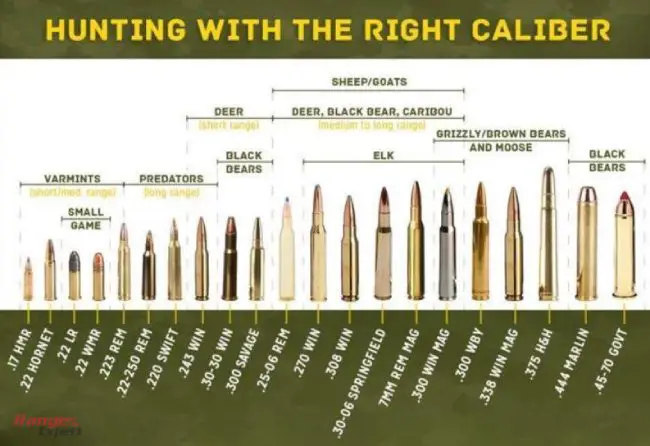
.30-06
The 30-06 combats the mighty .45-70 with its longer effective shooting range. They can deliver more than 1,000 ft-lbs of force even past 500 yards.
As a result, the .30-06 can effectively make a clean kill from a long distance.
Availability
.45-70
As I’ve already mentioned, the .45-70 bullets require more material and are larger in dimensions. That is one of the reasons that the .45-70 cartridges are a bit expensive.
You’ll need to spend around $2.75/round for practice ammo and $5/round or more for premium hunting loads.
Additionally, these rounds were designed to use with lever-action rifles. As a result, you’ll have fewer options when it comes to rifles. The Marlin 1895 is one of the best guide guns for the .45-70.
.30-06
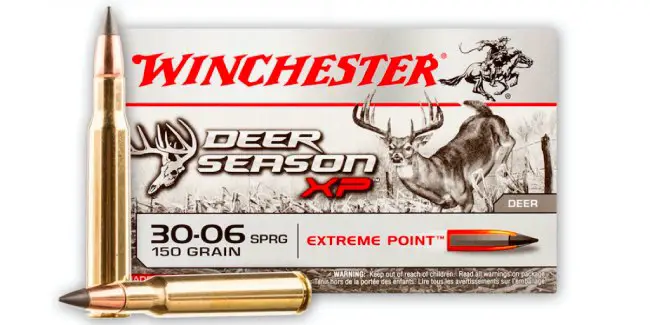
The 30-06 cartridges offer more variation to choose from in comparison with the .45-70. The .30-06 were military cartridges; thus, they are more widely available at a lower price.
They also offer a wider variety of bullet weight options (100gr-220gr) for small to large games. Standard .30-06 will cost about $1.50/round, whereas the premium loads will cost you double that amount.
Reloading
.45-70
The amount of available reload options in 45 70 compared to 30 06 is slightly lower. However, there are still plenty of loading options for hand loaders to choose from. As a result, the mighty .45-70 loses advantages despite offering a wide variety of customization.
.30-06
The compact .30-06 rounds take the lead with a far wider variety of options when it comes to custom reloading your bullets. Not only do they offer a common 0.308” diameter, but they also can utilize many different powders.
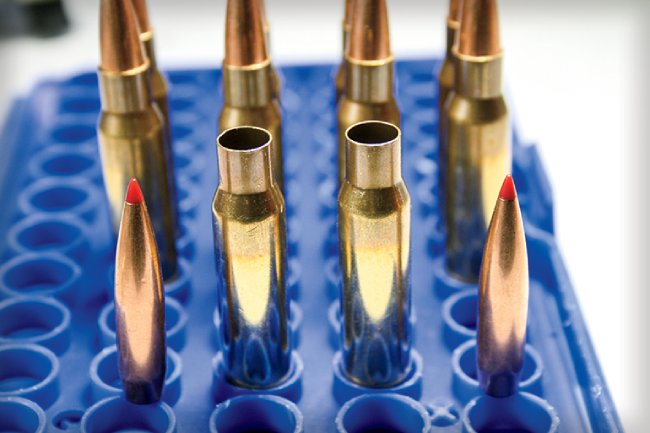
They require a large rifle primer and 30-caliber bullets. As a result, you’ll be able to craft hand loads for 4+ different calibers while purchasing only one caliber of bullet and primer size.
.30-06 vs .45-70: Which one to choose?
.45-70 vs .30-06: Which one should you pick? The answer will vary from person to person.
The .45-70 compared to .30-06 is still relatively popular among those who hunt big game animals in heavy cover and black-powder silhouette shooters. The 45-70 cartridges have served for over a century.
In justification of being more expensive, the hard-hitting big game .45-70 rounds offer bone-crushing muzzle energy that can be lethal for any game within 300 yards. If you’re a fan of big game hunting and have no issues with the price or the recoil, go for the .45-70.
On the flip side, if you’re more into long-range hunting, we recommend that you grab the compact .30-06. The stopping power and the long-range capabilities of these versatile rounds will make your game hunting more dynamic in a number of different hunting scenarios.
Even many modern rounds don’t come close to the popularity and raw stopping power that the.30-06 provides. They literally can harvest every four-legged animal across the North American continent.
The .30-06 bullets are also more cost-efficient. If you value those qualities, the compact 30-06 rounds won’t disappoint you at all. In conclusion, when talking about .45-70 vs .30-06, remember that the .45-70 works best at close-to mid-range whereas the .30-08 is perfect for long-range shooting.
FAQs
1. .45-70 vs .30-06 – what’s more powerful?
Ans. “More powerful” is something hard to define when talking about ammo. In general, .30-06 is more effective for large distances since it’s faster and has more energy than .45-70.
However, at short ranges, the .45-70 is more powerful against large animals but past that, the .30-06 wins against conventional game.
2. How far can I shoot a deer with a .45-70?
Ans. With a .45-70, you can hunt any game animal under 100 yards but for deer and elk, you can go 200 yards if you’re a skilled hunter.
3. 45-70 or 30-06 for bear hunting?
Ans. Both are fine and what matters most is the range here. The .45-70’s heavier mass is helpful when you’ll face off an angry bear at close range. On the other hand, the .30-06 will have more advantage with more energy as the range increases.
4. What was the 45-70 designed for?
Ans. The 45-70 was originally designed as a military round for the U.S Army in 1873, during their campaign against Native Americans in the Western United States. Since its launch, it has proven to be an effective tool that can take down virtually any game animal.
5. How far can a 30-06 shoot?
Ans. The maximum effective range of a 30-06 is about 800 yards for a skilled shooter, although it can reach up to 1000 yards with the right barrel and ammunition. Beyond that, it will still have some stopping power when shot at its maximum range, but accuracy will be severely affected.








































